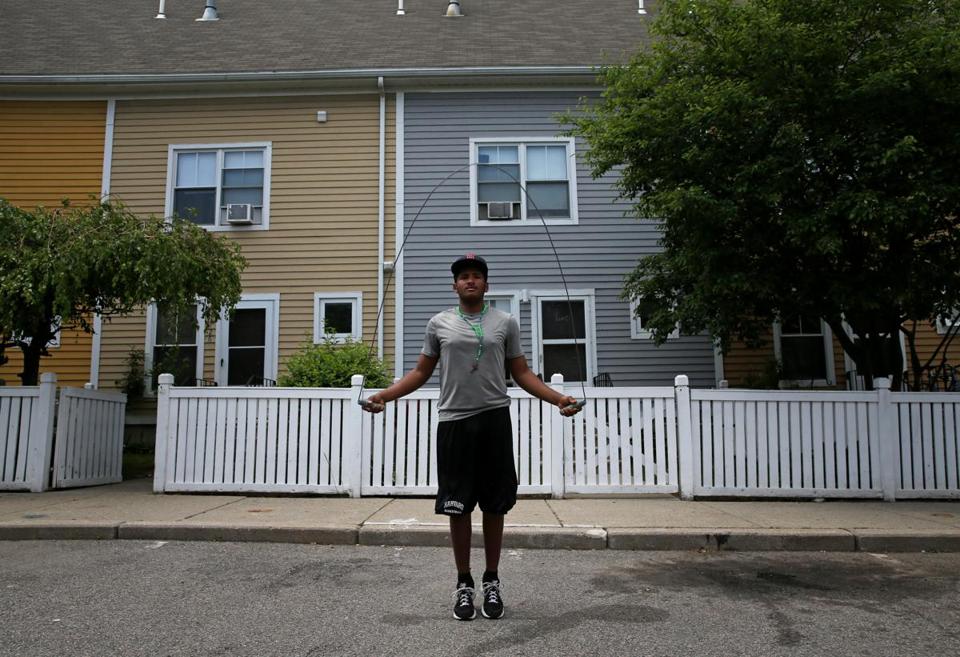The following excerpt featuring Madison Park Development Corporation appeared in The Boston Globe on September 2, 2016 (written by David Scharfenburg).
Read the entire article here.
‘Too many of these apartments’
The Orchard Park public housing project in Roxbury was a grim place. Shattered glass. Dead-end streets. In the late-1980s, a drug kingpin known simply as “God” ruled over the complex outside Dudley Square.
Now, a collection of trim, colorful town houses called Orchard Gardens stands in its place. Bouquets of flowers brighten the porches, and white chairs glint in the sun. “This was a place of despair,” said Jeanne Pinado, standing at the heart of the development on a recent morning, “and you can see what it is now.”
Pinado is chief executive of the Madison Park Development Corporation, a neighborhood nonprofit that helped build Orchard Gardens in the late 1990s with the assistance of a large federal grant.
Over the last half-century, Madison has overseen the construction of about 1,000 affordable apartments in the neighborhood — scattered among big, brick towers and squat, wood-frame row houses. For many, the developments are a source of pride: a symbol of self-empowerment in a neighborhood that was long neglected by city officials.
But in recent years, this pattern of housing development has faced mounting criticism from civil rights advocates and academics who say it locks too many poor people into poor neighborhoods, no matter how attractive the pastel exteriors and energy-efficient appliances.
Myron Orfield, director of the Institute on Metropolitan Opportunity at the University of Minnesota, has emerged as a leading critic of what he calls the “poverty housing industry” that has built it all.
Community development corporations like Madison Park, however well-meaning, are myopic, he says, “looking at the world one block or two blocks at a time” and missing larger concerns about segregation.
The big-name financial institutions that invest in the federal low-income housing tax credits that power the bulk of subsidized housing projects are seeking an easy way to meet their legal obligations to invest in high-poverty neighborhoods, he says.
And the developers that do the actual building, he says, are reaping tidy profits in communities where resistance is scant.
There are “two partners in racial segregation,” Orfield says. “One is white opposition — NIMBYism — and the other is the poverty housing industry. And they shake hands across the table.”
James Keefe, a principal with Trinity Financial, a development firm that partnered with Madison Park on the Orchard Gardens project, acknowledges that low-income neighborhoods provide the path of least resistance.
But a good building in a distressed area, he says, can be transformative.
“You make something beautiful and thoughtful that isn’t an army barracks with prison bars in the windows — you design to people’s better instincts — and, more often than not, people respond well to that,” Keefe says.
And the buildings, he points out, don’t stand alone. In Dudley Square, Madison Park has complemented its acres of affordable housing with job training, financial literacy courses, and a performing arts center with a visiting playwright.
Supporters of this sort of urban “placemaking” say it is a vital part of any credible antipoverty strategy; policy makers, after all, can’t just abandon big, poor neighborhoods in their zeal to integrate the suburbs.
But critics say the heavy reliance on inner-city revitalization is hard to justify when there is little evidence that such sweeping efforts to turn around poor neighborhoods actually boost incomes or improve school performance.
Pamela Rhodes Cannon has seen the stubborn quality of entrenched poverty up close.
She moved into the big patch of subsidized housing outside Dudley Square 33 years ago, and she quickly went about trying to improve the place.
She built a tenants association and helped start a fall festival. She counseled the neighborhood kids after shootings. And when she had a school cafeteria job, she brought them bags of leftover apples and chicken sandwiches.
“I’m telling you,” said Cannon, 55, strolling down the block on a recent afternoon, “I raised this whole neighborhood.”
But after decades of committee meetings and Unity Day celebrations, it has all begun to feel a little fruitless. There are still too many dangerous blocks in her subsidized village and the tough neighborhood just beyond, she says. And many of the kids Cannon coached through adolescence have struggled to move up and out as young adults.
Her own daughter, determined to leave subsidized housing, is still in it for now — just a couple of blocks away, raising a young girl.
Cannon, sitting on the couch in her modest living room, said: “Sometimes I feel like there are too many of these apartments together.”
photo credit: Craig Walker, The Boston Globe

